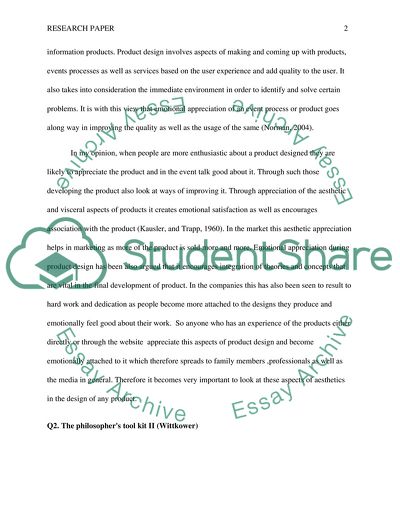Cite this document
(The Importance of Experience and Emotions During Product Design Assignment Example | Topics and Well Written Essays - 2000 words - 9, n.d.)
The Importance of Experience and Emotions During Product Design Assignment Example | Topics and Well Written Essays - 2000 words - 9. https://studentshare.org/information-technology/1797802-research-paper
The Importance of Experience and Emotions During Product Design Assignment Example | Topics and Well Written Essays - 2000 words - 9. https://studentshare.org/information-technology/1797802-research-paper
(The Importance of Experience and Emotions During Product Design Assignment Example | Topics and Well Written Essays - 2000 Words - 9)
The Importance of Experience and Emotions During Product Design Assignment Example | Topics and Well Written Essays - 2000 Words - 9. https://studentshare.org/information-technology/1797802-research-paper.
The Importance of Experience and Emotions During Product Design Assignment Example | Topics and Well Written Essays - 2000 Words - 9. https://studentshare.org/information-technology/1797802-research-paper.
“The Importance of Experience and Emotions During Product Design Assignment Example | Topics and Well Written Essays - 2000 Words - 9”. https://studentshare.org/information-technology/1797802-research-paper.


